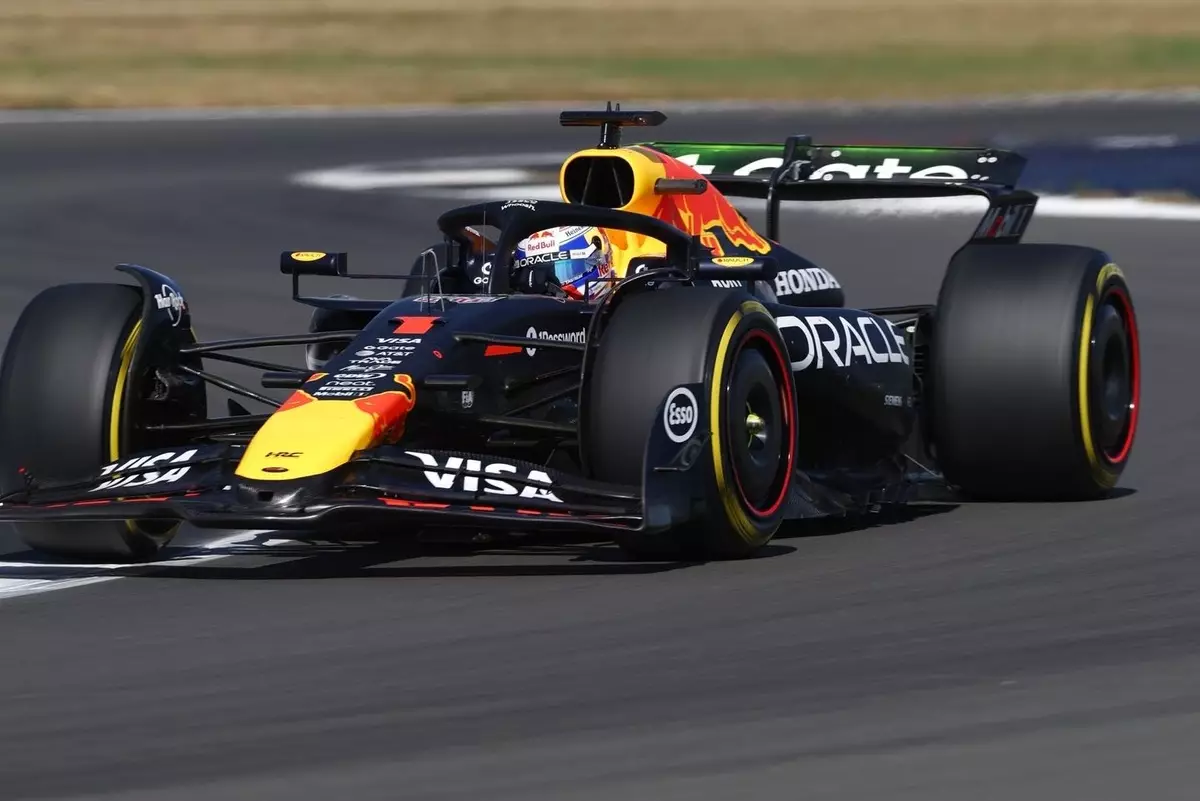The opening sessions at the British Grand Prix serve as a stark reminder that even the most dominant teams in Formula 1 are susceptible to the chaotic realities of racing. Max Verstappen, the reigning champion and a symbol of Red Bull’s recent supremacy, expressed genuine frustration after Friday practice—an unusual sight for a driver of his caliber. His remarks, describing the day as “quite a bad day,” highlight a critical shift in team dynamics and performance expectations. The sentiment reveals that despite Verstappen’s lofty achievements, he remains acutely sensitive to the nuances of the car’s handling, especially under adverse conditions like Silverstone’s unpredictable wind.
It is no secret that the current Red Bull machinery appears to be faltering in the face of tougher competition. The team, historically known for setting the pace, now finds itself chasing McLaren, an aggressive underdog this season that has outpaced the reigning giants on the performance front. Verstappen’s comment about the car’s “lack of balance” underscores deeper issues—these are not mere “teething problems,” but signals that Red Bull’s engineering and setup strategies need urgent refinement. His candid acknowledgment that the wind factor “plays a part” demonstrates how external conditions are exposing underlying weaknesses, which former seasons’ dominance managed to mask.
Strategic Challenges and the Human Element
Beyond the technical setbacks, the team faces a more insidious challenge: keeping Verstappen motivated amid swirling rumors and uncertainty about his future. Christian Horner’s comments about “new tools” and continuous improvement emphasize a sense of urgency within the Red Bull camp. It’s not enough to merely respond to performance dips; strategic innovation must become a constant in this evolving landscape. Horner’s promise of investing in new wind tunnels and organizational upgrades illustrates the team’s recognition that evolution is non-negotiable if they are to retain their competitive edge.
Yet, such investments are not a quick fix. They reflect a team that recognizes how every season unveils fresh hurdles, and that complacency can be costly. The internal struggles are compounded by external speculation—rumors of Verstappen potentially switching teams have not been dismissed outright by Horner, casting a shadow that could influence the Dutchman’s mindset. This scenario raises questions about the psychological pressure racing drivers endure when their commitment is questioned or uncertain. For Verstappen, this isn’t just about weekend performance but about his legacy and future in a fiercely competitive environment where every point counts.
Performance in Context: A Broader Perspective
Despite Verstappen’s frustrations, it’s important to contextualize his comments. The fact that his long-run pace comes close to McLaren’s top drivers suggests that Red Bull possesses a competitive baseline. However, being “close” is insufficient in a sport where milliseconds translate into victories or defeats. The specific mention of issues in corners—particularly Turn 6 and 7—points to a fundamental handling problem. Understeer, combined with aerodynamic inefficiencies, suggests the team must overhaul its setup philosophy rather than rely solely on incremental adjustments.
Furthermore, the ongoing challenge for Red Bull is to translate their raw pace into consistency—something they have been historically adept at but are currently struggling to demonstrate. The wind tunnel upgrades and organizational improvements hinted at by Horner are critical because the team must harness technological advancements to iron out these flaws. In a sport driven by rapid innovation, stagnation is equivalent to falling behind.
The Bigger Picture: More Than Just a “Bad Day” in Formula 1
Ultimately, the Silverstone practice sessions reveal a team at a crossroads. Red Bull’s historical dominance appears to be waning under the weight of increased competition and internal challenges. Verstappen’s candidness about the car’s shortcomings signals a driver who is not willing to accept mediocrity—an attitude that can either propel the team toward self-improvement or further unrest if not managed properly.
The team’s response to these early setbacks will define their trajectory for the remainder of the season. Leadership’s focus on organizational upgrades, technological investments, and stability in driver management will be essential. However, the internal narrative must also shift from defensive to proactive—addressing the car’s issues with urgency and transparency.
In the grand chessboard of Formula 1, this is a pivotal moment for Red Bull. Their ability to adapt swiftly, restore confidence, and deliver a race-winning package will determine whether they retain their throne or are overtaken by relentless competitors eager to capitalize on their vulnerabilities. The road ahead demands not just technical brilliance but a strategic mindset resilient enough to turn setbacks into setups for future success.


Leave a Reply